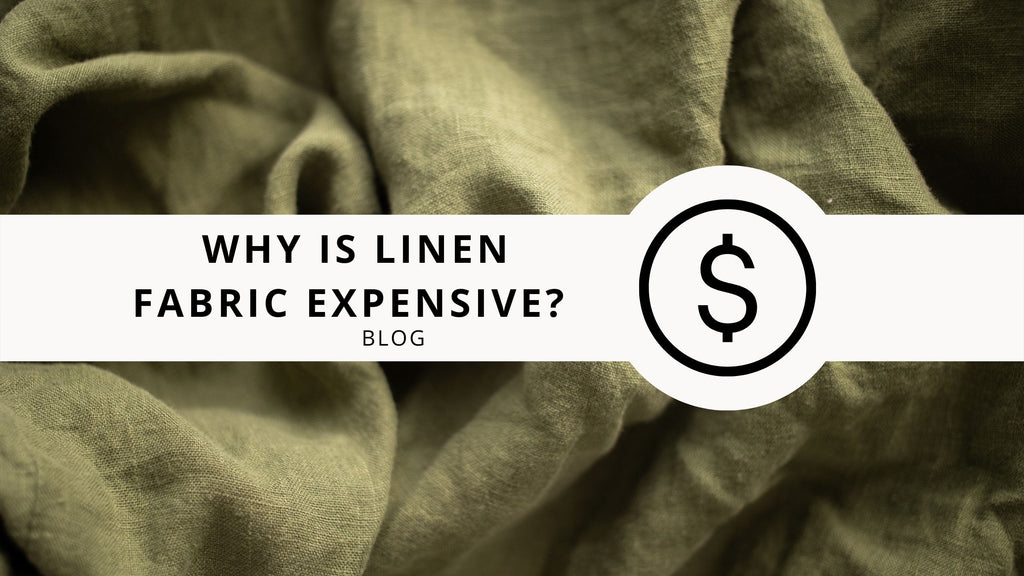Why Is Linen Fabric Expensive

Why Is Linen Fabric Expensive
The cost of linen fabric varies considerably depending on the quality. However, superior quality linen can be quite expensive, and there are a couple of reasons for this higher price. First, manufacturing linen is a time-consuming and laborious process, which is the main factor that drives its higher price.
Here’s a behind-the-scenes look at how linen is made.

Harvesting Flax Plant
The flax plant is ready to be harvested about 90 days after the seeds are planted. When it’s time for harvesting, the flax plant cannot simply be cut. The entire plant must be uprooted intact from the ground. This helps obtain the maximum length of the fibre, which is key to manufacturing high-quality linen. Uprooting each plant is tedious work and takes a whole lot of time.
Extracting The Fibre From The Flax Plant
Extracting the fibre from the flax plant is another laborious process involving three steps:
- Retting – The flax stalks are soaked in water to soften them in this first step. The soaking stalks undergo partial rotting because of the action of bacteria and fungi. This partial rotting prepares the flax stalks for the next step.
- Scutching – This second step involves crushing the sodden and partially rotted flax stalks between heavy-duty industrial metal rollers, which separates the inner fibres from the outer woody stalk.
- Hackling – The flax is run through hackling combs in this final step. These combes separate the long fibres from the shorter fibres. The long fibres are then woven into linen.

Weaving Linen Fabric
Weaving linen fabric from processed flax is another time-consuming step in linen manufacturing. The weaving is done using industrial-scale machinery. What slows down this process is that flax fibres are very delicate and tend to break easily, so the machine speed has to be run at a relatively lower speed. The longer time taken to weave the linen fabric adds to its higher cost.

Growing Conditions
The highest quality linen is obtained from flax plants grown and harvested in Western European countries in regions in and around France, Italy, Belgium, and the Netherlands. The climate and soil in these regions offer ideal conditions for flax plants to grow and thrive. The higher cost of production and labour in these regions contributes to the cost of linen.
Ultimately, it’s easy to see why linen is costly, but what does that mean for you? Is it worth paying the higher price to buy linen, or should you settle for a cheaper alternative?
Why Linen Is Worth It Despite The Higher Price
There’s no denying that despite the higher price, linen is far more popular than most other types of fabrics, natural or synthetic, because of the many benefits it offers.
Linen is hypo-allergenic and highly thermo-regulatory, keeping the skin comfortable whether it’s a hot sunny day or a cold winter morning. In addition, the fabric gets softer and more comfortable with each wash, which is a rare quality among fabrics.
The soft, delicate look of linen belies its inner strength and rigidity, which contributes to the fabric's longevity. I own linen sheets and clothes that have been washed several times over the years and still look none the worse for wear.
Last but not least, you can find linen fabrics in an assortment of beautiful colours and prints that you won’t find with any other fabric.
So is linen worth the higher price? It most definitely is! You know you’ll stand out from the crowd when you’re wearing a gorgeous linen outfit that you’ve sewn yourself.





